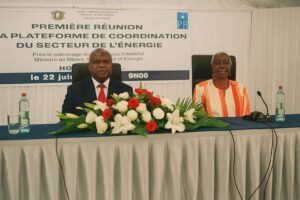National Electrification Vision Aligns with SDG7
In Brazzaville, senior officials and private-sector stakeholders gathered on 22 July to endorse the National Energy Pact, more colloquially branded Electricity for All. The initiative sets a measurable objective: extend reliable power to at least 800,000 additional households in every locality exceeding one thousand inhabitants by the close of 2030. According to the Ministry of Energy and Hydraulics, current national access hovers near forty-five percent, with pronounced urban-rural disparities. By anchoring the programme to the United Nations Sustainable Development Goal 7, the Congolese government signals that its aspirations are not merely domestic milestones but contributions to a global compact on affordable, clean energy.
Financing Architecture and the Role of Mission 300
The project’s fiscal scaffolding blends concessional lending, private equity and results-based grants. Brazzaville intends to present the portfolio to the World Bank during the upcoming Mission 300 round, a platform designed to accelerate electrification across emerging markets. Officials familiar with the dossier indicate that a signing ceremony is pencilled in for September on the margins of the UN General Assembly in New York. Beyond the Bank, partners include the UN Development Programme, the International Monetary Fund and the Rockefeller Foundation. Collectively, these actors view Congo as a test case for an investment model where public guarantees de-risk renewable assets, while targeted subsidies cushion low-income consumers.
Renewables at the Center of Congo’s Energy Mix
Hydroelectric potential along the Congo and Kouilou rivers provides the backbone of the proposed generation portfolio. Yet policymakers are equally attentive to solar irradiation corridors in Plateaux and Niari as well as nascent biomass hubs linked to the timber industry. Data from the International Renewable Energy Agency suggest that integrating up to three hundred megawatts of solar capacity by 2028 would be technically feasible without jeopardising grid stability. In an interview, Deputy Energy Minister Didace Massamba argued that ‘diversification is not a slogan but a resilience imperative’. His comment reflects lessons learned from the 2021 drought, which temporarily reduced hydro output by fourteen percent (World Bank 2023).
Tariff Reform and Grid Efficiency Challenges
Universal access is contingent not only on new megawatts but on commercial viability. The current tariff regime, last adjusted in 2015, generates estimated annual losses of nearly five percent of GDP due to technical leakages and non-payment (African Development Bank 2021). Authorities therefore plan a gradual realignment of tariffs with cost-reflective benchmarks while preserving subsidised lifeline blocks for vulnerable groups. Smart metering pilots in Pointe-Noire have already trimmed illegal connections by twenty-two percent, a figure corroborated by the national regulator. These incremental gains could liberate fiscal space for further grid reinforcement.
Geopolitical Significance of Universal Access
Improved electrification dovetails with Brazzaville’s broader diplomatic posture. Reliable energy is indispensable for processing the country’s timber and manganese locally, thereby reducing dependency on raw-material exports. Moreover, surplus renewable power could be wheeled to the Economic Community of Central African States, enhancing Congo’s soft power within a region often characterised by energy deficits. Diplomatic observers in Kinshasa have noted that a functional cross-border grid might also temper historical rivalries by creating mutual stakes in infrastructure security.
Roadmap to 2030 and Beyond: Pragmatism and Caution
The Electricity for All pact is articulated as a phased strategy. An initial focus on peri-urban clusters, where connection costs are lower, will provide early wins and demonstrable benefits. Subsequent phases envisage mini-grids and stand-alone solar systems for remote northern districts, aligning with evidence from the International Energy Agency that decentralised solutions often outpace grid extension in cost efficiency. Yet caution remains advisable. Commodity price volatilities, climate risks and global interest-rate fluctuations could squeeze capital flows. Analysts at Fitch Solutions warn that maintaining investor confidence will require transparent procurement and consistent policy signals. Still, the confluence of domestic political commitment and multilateral backing renders the 800,000-home target credible, if ambitious. By framing energy access as both a social contract and a geostrategic lever, Congo-Brazzaville positions itself as a noteworthy laboratory for sustainable electrification in Central Africa.

















